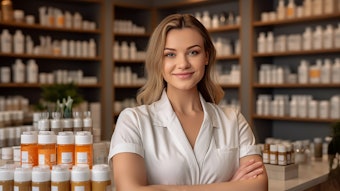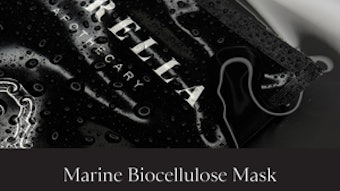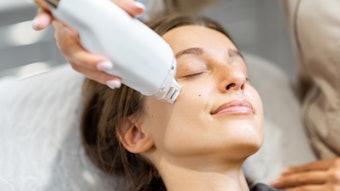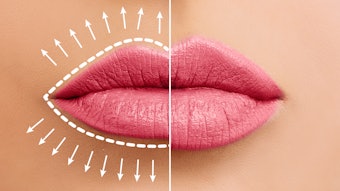
In a market driven by what could be considered “hype,” Des Fernandes, M.D., founder of Environ Skincare, strives to deliver results with his medical esthetic products. For over three decades, he has worked to formulate well-researched products that speak for themselves.
He shared his insights on his past, the industry and the importance of the ingredients chosen to protect your clients’ skin.
“I did not plan to ever become a manufacturer of skin care products.”
Already a plastic and reconstructive surgeon, Fernandes began making skin care products after losing two young patients from melanoma in the late 1970s. He connected the dots between UV light and their disease, and he set out to find a way to try to prevent melanoma.
Since skin cancers were treated with retinoic acid, he researched sun-sensitive vitamin A's connection to photodamage. In time, he discovered that skin cells can convert all forms of vitamin A into active retinoic acid, and after using retinoic acid, “on [his] own skin as [his] 40th birthday present to [him]self,” he began to expand his skin research into products.
“...medical esthetic products need much more monitoring by educated/informed estheticians to deal with these transient difficulties and also to guide the clients so that they avoid being irritated.”
“…I was telling my friends that I had the formula for the skin care of the future.”
After his formula combining vitamins A, C and E with beta carotene was rejected or ignored by two large cosmetic companies in 1985, Fernandes began to make basic vitamin A creams in his kitchen. With the help of an analytical chemist to make active creams with vitamin A and antioxidants, Fernandes began giving patients products for free with consultations. When the waiting list for an appointment with Fernandes grew to nine-months-long, he teamed up with his sister to sell to the general public.
“I only want the best possible products...”
Fernandes has always been making his products with a medical esthetic point of view. That’s why he’s continually striving to have the best active ingredients at the proper dosage and properly protected in the container to be delivered to the skin at their maximum activity.
“Generally, medical esthetic products are more difficult to formulate and also difficult to make because they should have several active ingredients, which pose difficulties to become integrated with each other in one product,” added Fernandes.
One of the biggest differences of medical esthetic products is that they concentrate on function rather than luxurious form or textures.
“When one uses active ingredients, then one must expect more irritation problems as the skin adapts to outside influence,” he said. “That is why medical esthetic products need much more monitoring by educated/informed estheticians to deal with these transient difficulties and also to guide the clients so that they avoid being irritated.”
“I have always made relatively smaller batches of products more frequently.”
When developing products for the medical spa industry, there are some challenges formulators face. Skin care companies start a “medical” product with a desired function to be achieved that will make visible changes. They have to have clinical evidence that the active ingredient is effective and then determine the dose that gives the best results. “That requires clinical work with human volunteers to find out the most effective dose,” said Fernandes.
"One needs to formulate also to ensure that the actives can reach their targets to make visible changes."
Trials may last a long time because you really need to know the effects of continued use of the product. The stability of the cocktail of ingredients has to be tested, and then adjustments to the formula are needed to keep the actives active for the longest time necessary.
Clinical setting and adjusting of formula consume many months. “One needs to formulate also to ensure that the actives can reach their targets to make visible changes. Peptides may be trapped on the skin surface and destroyed by enzymes without getting the chance to make changes in skin,” added Fernandes.
In general, active ingredients tend to be more sensitive to light, air, heat and the pH of the product in its packaging. As a result, some products may need to be manufactured under special lights to avoid decay of the activity.
“A good example is vitamin A, which should be manufactured under reddish lights to avoid breakdown of the retinoid molecule,” said Fernandes. “Others that are sensitive to oxygen need to be manufactured in the absence of oxygen under ‘nitrogen blankets’ and then all oxygen needs to be removed from the packaging.”
“Our shelf life is kept purposely short to ensure the freshest vitamins, etc.,” he added. “I know that scaling up with active ingredients is harder than conventional ingredients and also much more critical. Active ingredients tend to be more expensive as well.”
“I concentrate on treating all of the visible signs of photo-aging…”
The Environ Skincare team members’ work is largely directed by what they identify as products that need to be developed to meet certain cosmetic or esthetic goals.
“Today we have to recognize that botulin toxin and fillers are the most frequently performed esthetic procedures, but not everyone wants to have an injection,” said Fernandes. “I have worked on products that can give a relaxed fuller appearance when used daily together with the “cosmetic” roller that I designed in 2000.”
“While we are relatively successful in treating wrinkles, dull and lax skin, we have yet to find ways to treat pigmentation problems. ... This is one of the greatest frustrations in medical esthetic products."
Primarily, Fernandes concentrates on treating all of the visible signs of photo-aging and trying to restore a youthful appearance. “While we are relatively successful in treating wrinkles, dull and lax skin, we have yet to find ways to treat pigmentation problems,” he added. “This is one of the greatest frustrations in medical esthetic products. That is why so many doctors resort to using hydroquinone, which has unpleasant complications even though it may lighten pigmentation more successfully than any other ingredient.”
Fernandes suggested that hydroquinone should never be used, and since 1990, he has avoided using it. “In about 40 percent of cases, one may find dramatically worse pigmentation may develop even though in the beginning, the pigmentation disappeared very well,” he said.
“I think the big challenges in this field are to keep active ingredients effective.”
Fernandes said, “For example, we know that there is an almost unavoidable decay of vitamin A and other vitamins starting soon after production, and the chemical milieu is of utmost importance in ensuring the greatest stability.“
“We have worked hard on this, and it is gratifying that we have the Swiss Vitamins Institute seal to show that our products are stable and have active levels for the duration of the shelf-life,” he added.
Fernandes feels that is probably the gold standard for vitamin-based products. Their peptides have to be clinically effective before they will release them and that is where his research work concentrates. “We depend on not only photographs but also histology and histochemistry,” he said.
According to Fernandes, they have also done trials with internationally recognized, independent research facilities to test the effects of their products against photodamage, rosacea and pigmentation problems. “I feel certain that mass products are never scrutinized as intensively as this,” he said.
“In the end, it is the visible clinical result that has to convince us that the product works and promotes the health of the skin,” said Fernandes. “Since I use our products on myself, I only want the best possible, effective products on my skin. I joke that I make all these products for me and share them with our clients.”










